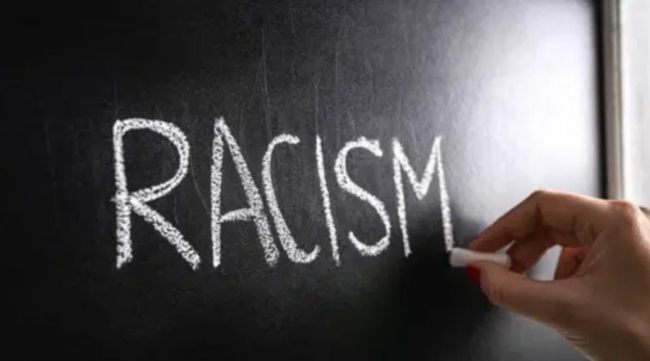Opinion Social sciences, and understanding systemic inequality
There is a communication breakdown between social scientists and broader society
 Fundamental to CRT is the well-documented idea of “systemic racism”, which shows how racial discrimination is embedded in society’s everyday laws and practices. (Photo Source: Getty Images)
Fundamental to CRT is the well-documented idea of “systemic racism”, which shows how racial discrimination is embedded in society’s everyday laws and practices. (Photo Source: Getty Images) Recent developments concerning Critical Race Theory (CRT) in the US serve as an opportune moment to reflect on some questions it raises for our understanding of the social sciences and how they are perceived in society. On the surface, the backlash against CRT in American states can be seen as another instance of the increasing polarisation between the (Democratic) left and the (Republican) right that has come to the forefront since Donald Trump’s election in 2016. But, leaving our analysis at the political level misses a deeper epistemic problem that affects not just CRT but all social theories.
Social sciences, by their definition, study society and derive their legitimacy by adopting the scientific method. If not for the embedded scientism, they can be conflated with the more speculative “humanities”. Social scientists, hence, assume that they are providing a scientific explanation of a phenomenon in society. But unlike natural sciences, where an assumption and the accompanying theory (explanatory framework) can be easily falsified in the Popperian sense, this is not so for social sciences.
Consider two fictional researchers, X and Y, who want to understand the reason for the BJP’s exceptional performance in the last two general elections. They may rely on a repertoire of methods but the method they adopt is inevitably tied to the assumptions and hypotheses that inform their study, which in turn impact the variables observed and data collected. X tests the hypothesis that BJP’s rise is the result of a consolidation of Hindu majoritarianism in India while Y hypothesizes the BJP’s success as a consequence of its effective party organisation and on-the-ground mobilisation. Apart from the representative survey data collected by these researchers, X also relies on participant observation and unstructured interviews with subjects. In contrast, Y supplements her surveys with expenditure data of the BJP’s local wings and compares the party’s relief budget and social responsibility projects expense with those of competing parties. After completion, both X and Y find that their hypotheses stand. X claims that the BJP’s rise to power must be attributed to the increasing acceptance of Hindutva in India. Y calls this explanation “ideological” and provides “data” that debunks India’s majoritarian turn.
Summaries of X and Y’s research find their way was to observers C and D, two exemplars of scientific temper in society. C reads these summaries and concludes that X and Y’s findings taken together best explain the BJP’s rise. Yet, C thinks Y has a better explanation because of its lack of biases and the irrefutable data. Unlike C, D finds all of this a vindication of the belief that almost all theories propagated by social scientists are a hogwash and that social sciences are more of a “pseudo-science” than “real science”, the latter always vulnerable to falsification. A mixture of C and D’s attitudes reflects the general public’s disposition towards what constitutes as scientific in society. Ongoing CRT debates must be contextualised within this narrow scientism.
 Fundamental to CRT is the well-documented idea of “systemic racism”, which shows how racial discrimination is embedded in society’s everyday laws and practices. This systemic approach when extrapolated to studying caste and gender provides a compelling way of understanding anti-caste, feminist and LGBTQ movements as having ambitions that go beyond the narrow confines of identity, within which they are often boxed, to domains of intersectionality. Injustices meted out by existing social structures to individuals, rather than valorising their identities, informs the core of these theorisations. But what is also common to all of them is their reliance on the subject’s standpoint. Discrimination suffered by subjects is not a fault of their making. Oppression is understood from the viewpoint of the oppressed. And herein lies the communication breakdown between social science and scientism proponents in society. The latter’s scientific worldview does not permit subjectivity as a source of truth. Social sciences, in this view, are not only exposed to the experiential biases accompanying the subject but also vulnerable to the biases of the researcher who often incorporates insights from theoretical frameworks like liberal, Marxist, or Foucauldian that have no basis in science, thus undermining the scientific authority that social sciences claim.
Fundamental to CRT is the well-documented idea of “systemic racism”, which shows how racial discrimination is embedded in society’s everyday laws and practices. This systemic approach when extrapolated to studying caste and gender provides a compelling way of understanding anti-caste, feminist and LGBTQ movements as having ambitions that go beyond the narrow confines of identity, within which they are often boxed, to domains of intersectionality. Injustices meted out by existing social structures to individuals, rather than valorising their identities, informs the core of these theorisations. But what is also common to all of them is their reliance on the subject’s standpoint. Discrimination suffered by subjects is not a fault of their making. Oppression is understood from the viewpoint of the oppressed. And herein lies the communication breakdown between social science and scientism proponents in society. The latter’s scientific worldview does not permit subjectivity as a source of truth. Social sciences, in this view, are not only exposed to the experiential biases accompanying the subject but also vulnerable to the biases of the researcher who often incorporates insights from theoretical frameworks like liberal, Marxist, or Foucauldian that have no basis in science, thus undermining the scientific authority that social sciences claim.
A way forward for researchers is to be conscious of this slip to cold rationalism in society and devise methodological nuances that address this. Alternatively, they can also display their research as drawing authority from logic, rhetoric and the broader humanities, as opposed to science. But the most ideal way forward is to supplement undergraduate science education with a dose of history or philosophy of science. This will attune everyone to the indispensability of “unscientific” approaches to the development of science itself and, hopefully, help us better understand what is “scientific.” After all, the crisis we face is not entirely a problem of truth but a lack of education.
The writer is a researcher with an interest in political theory




